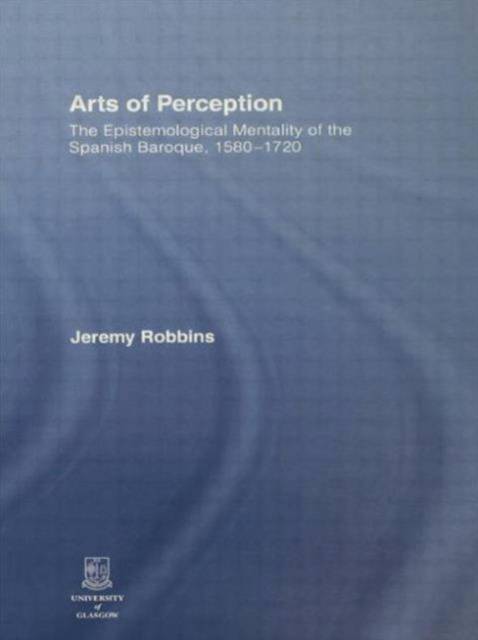
- Retrait gratuit dans votre magasin Club
- 7.000.000 titres dans notre catalogue
- Payer en toute sécurité
- Toujours un magasin près de chez vous
- Retrait gratuit dans votre magasin Club
- 7.000.0000 titres dans notre catalogue
- Payer en toute sécurité
- Toujours un magasin près de chez vous
Arts of Perception
The Epistemological Mentality of the Spanish Baroque, 1580-1720
Jeremy RobbinsDescription
Arts of Perception offers a new account of a key period in Spanish history and culture and a fundamental reassessment of its major writers and intellectuals, including Gracián, Quevedo, Calderón, Saavedra Fajardo, López de Vega, and Sor Juana.
Reading these figures in the context of European thought and the new science, and philosophy, the study considers how they developed various 'arts of perception' - complex perceptual strategies designed to overcome and exploit epistemic problems to enable an individual to act effectively in the moral, political, social or religious sphere. The study takes as its subject the distinctive epistemological mentality behind such 'arts of perception'. This mentality was fostered by the creative interaction of scepticism and Stoicism, and found expression in the key concepts ser/parecer and engaño/desengaño. The work traces the emergence, development, and impact of these concepts on Spanish thought and culture.
As well as offering new interpretations of specific major figures, Arts of Perception offers an interpretation of the mentality of an entire culture as it made the fraught transition to intellectual modernity. As such it ranges over numerous discourses and formative contexts and provides a wealth of new material which will be of use to all those seeking to understand and interpret the literature, culture and thought of Golden Age Spain.
This book was previously published as a special issue of The Bulletin of Spanish Studies.
Spécifications
Parties prenantes
- Auteur(s) :
- Editeur:
Contenu
- Nombre de pages :
- 304
- Langue:
- Anglais
Caractéristiques
- EAN:
- 9780415860291
- Date de parution :
- 13-02-14
- Format:
- Livre broché
- Format numérique:
- Trade paperback (VS)
- Dimensions :
- 174 mm x 246 mm
- Poids :
- 494 g

Les avis
Nous publions uniquement les avis qui respectent les conditions requises. Consultez nos conditions pour les avis.






